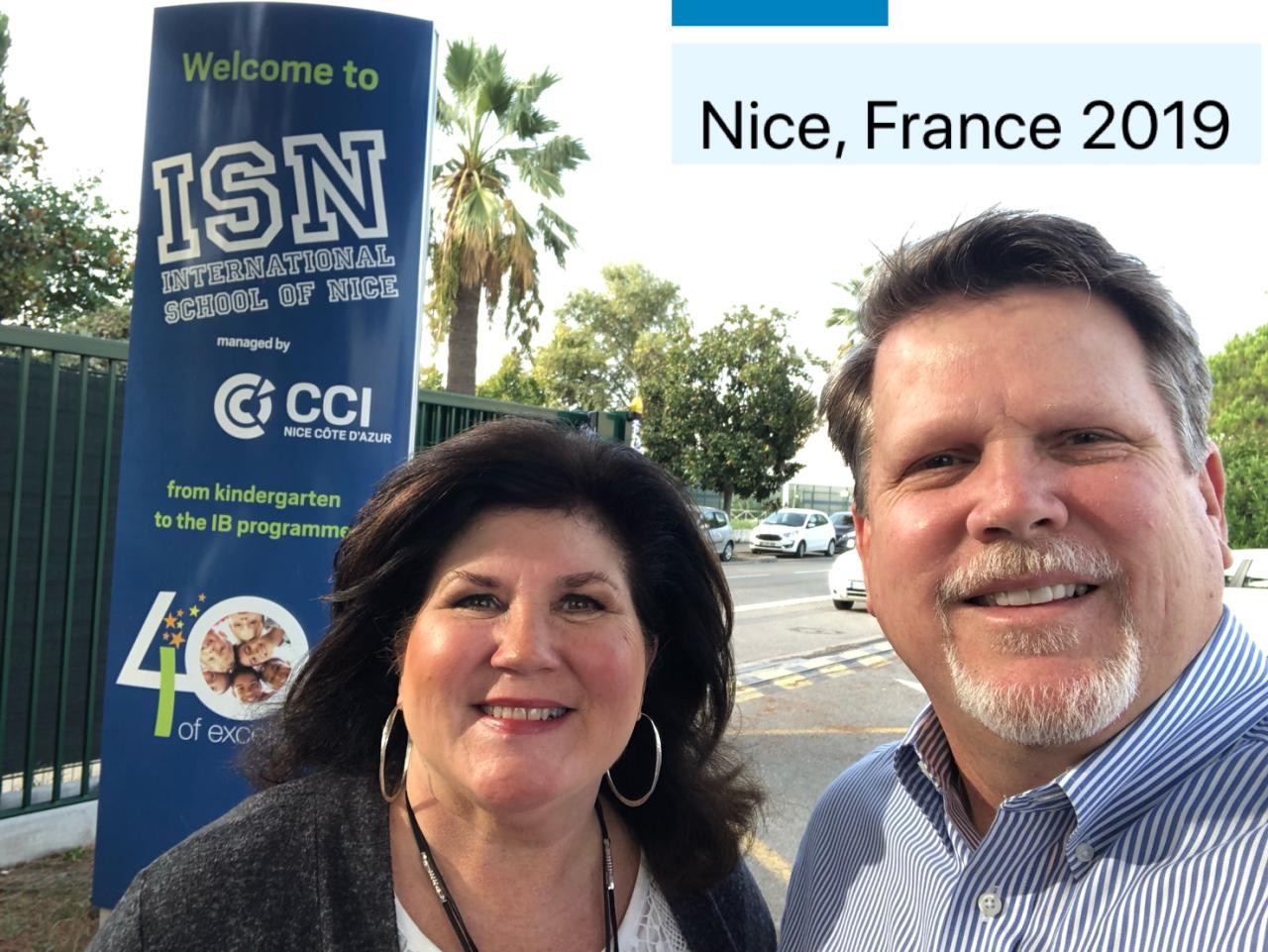
Global Perspective on Enrollment Strategy
 This week Tammy and I had the privilege of leading workshops in Nice, France, for admissions professionals from international schools across Europe, Africa, Australia, and the Middle East.
This week Tammy and I had the privilege of leading workshops in Nice, France, for admissions professionals from international schools across Europe, Africa, Australia, and the Middle East.
We learned about the challenges that are limiting their growth and shared strategies for building stronger engagement with faculty and families.
You may be interested in learning what they identified as their challenges to grow this year.
In collaboration with the Association of Independent School Admissions Professionals (AISAP) and the Educational Collaborative for International Schools (ECIS), we led professional development programs for enrollment directors from a wide range of countries and backgrounds at their annual conference. Experiences like this contribute to our research base and enable us to see trends from a broader perspective.
What was most intriguing is that the challenges expressed by these admissions professionals were so similar to those found in the United States and Canada. Three of their top concerns are described below.
1. Silo'ed Faculty Culture
Silos among grades, divisions, or other groups within a school foster internal dissension, limit perspective, and cause people to lose sight of the bigger goals. Communication and engagement between departments breakdown, producing organizational dysfunction and undermining learning.
Fractured faculty limit the joy of teaching and learning. At School Growth, we are R.A.D.: Radically Against Dysfunction. Because dysfunctional leadership inflicts such profound damage on faculty and families, stifling your ability to grow!
The enrollment directors we talked to can see this happening in their schools but feel powerless to do anything about it. So they develop workarounds, avoiding certain people on their tours and hoping the family doesn't see too much of this behavior and the resulting issues.
2. Undervalued Enrollment Data & Perspective
Very, very few schools sell themselves.
Effectively recruiting new clients requires a set of disciplines that are unique to the enrollment office, and are too often undervalued by the faculty and parts of the administration. This may be caused by leadership that fails to recognize the art and science of enrollment development and/or by academic arrogance that values some skills and talents over others.
The enrollment office can provide extraordinarily valuable data, insights, and connections that improve leadership decision making and help reduce the negative effects of confirmation bias. Enrollment data can be used to advance continuous improvement by providing more accurate answers to questions such as:
- Where are new families coming from and why are they choosing your school?
- Which grades/divisions are sustaining relationships with families? Who is not?
- What trends may potentially impact future enrollment?
3. Inconsistent Brand Limits Differentiation
More schools are pursuing brand differentiation as core to their Strategic Growth Plan. To create a compellingly excellent brand, three factors are critical:
1. Internal Understanding of and Belief in your Brand Narrative (If your own employees don't believe what your saying, how can you expect others to listen?)
2. Deep Understanding of your Target Market(s)
3. Concrete Differentiation from your competition based on your Organizational Genius
The enrollment officers we spoke with lamented the lack of consistency from classroom to classroom, person to person. They too often have to compensate for wide variations in performance and communication, and sometimes don't even know about changes made in the curriculum or other parts of the program. Frustrations like this de-energize the admissions office and limit growth opportunities.
Good News: These three challenges can be overcome, but they require a renewed commitment to culture and disciplined leadership. The rest of the world has moved well beyond annual cycles of learning and improvement, and it's time for educators to do the same.
You can create a Strategic Growth Plan and a culture that listens more effectively, builds stronger relationships (especially with the enrollment office), and implements a faster, more effective process for learning and improvement. The wise administrator listens to the voices of his/her people and creates an environment for safety, trust, and growth.

.png?width=1000&height=199&name=SG-Logo3-Transparent-1000x199px%20(1).png)




